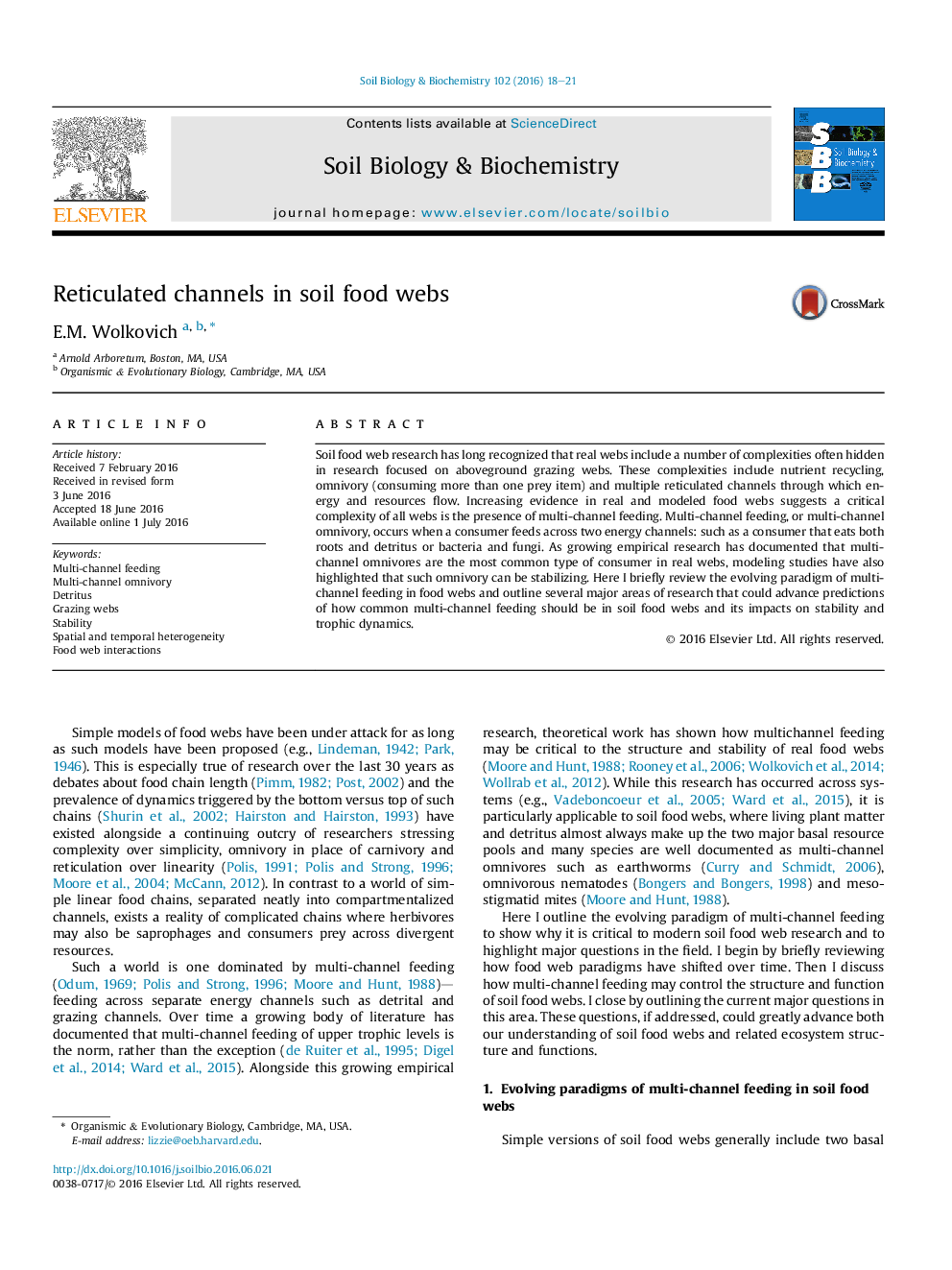| Article ID | Journal | Published Year | Pages | File Type |
|---|---|---|---|---|
| 5516548 | Soil Biology and Biochemistry | 2016 | 4 Pages |
â¢Real soil food webs include a number of important complexities.â¢Multi-channel feeding occurs when a consumer feeds across two energy channels.â¢Modeling studies show such omnivory can be stabilizing and alter system dynamics.â¢The level at which multi-channel omnivores link channels may drive effects on webs.â¢Increased focus on resource heterogeneity and energy flows is needed.
Soil food web research has long recognized that real webs include a number of complexities often hidden in research focused on aboveground grazing webs. These complexities include nutrient recycling, omnivory (consuming more than one prey item) and multiple reticulated channels through which energy and resources flow. Increasing evidence in real and modeled food webs suggests a critical complexity of all webs is the presence of multi-channel feeding. Multi-channel feeding, or multi-channel omnivory, occurs when a consumer feeds across two energy channels: such as a consumer that eats both roots and detritus or bacteria and fungi. As growing empirical research has documented that multi-channel omnivores are the most common type of consumer in real webs, modeling studies have also highlighted that such omnivory can be stabilizing. Here I briefly review the evolving paradigm of multi-channel feeding in food webs and outline several major areas of research that could advance predictions of how common multi-channel feeding should be in soil food webs and its impacts on stability and trophic dynamics.
